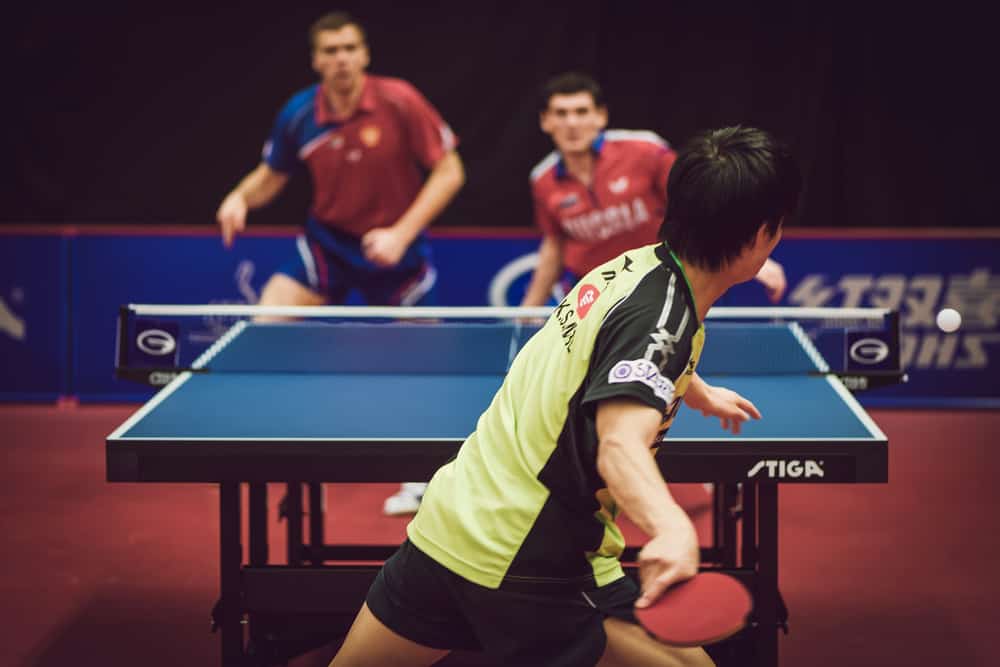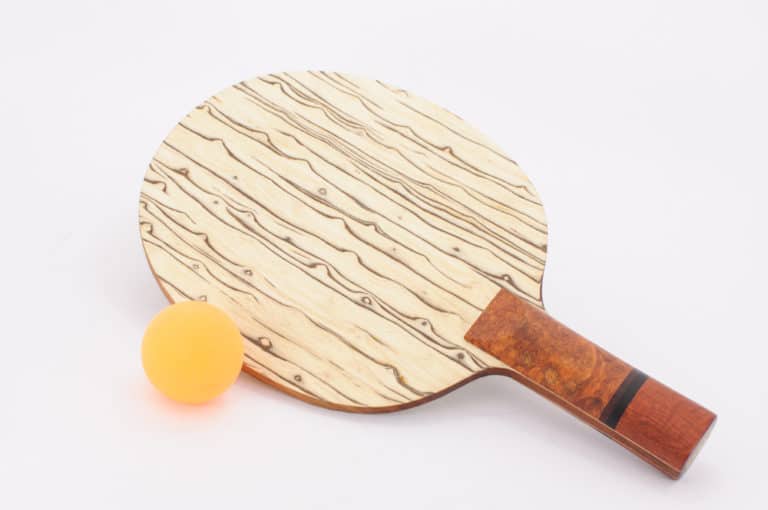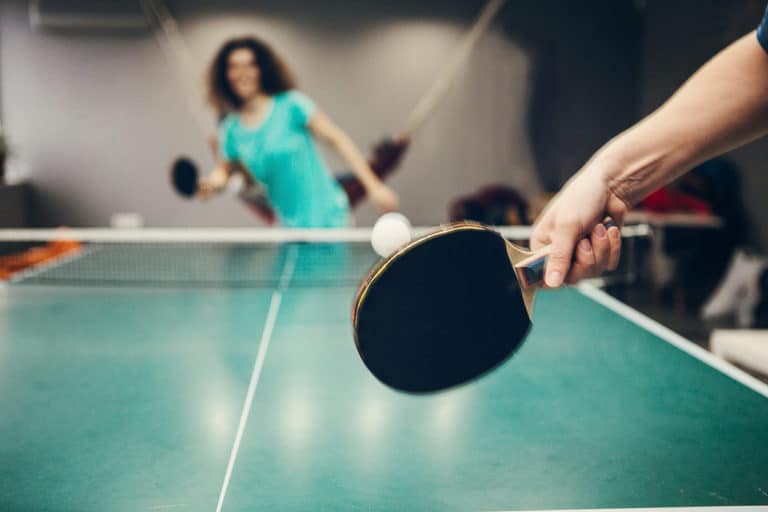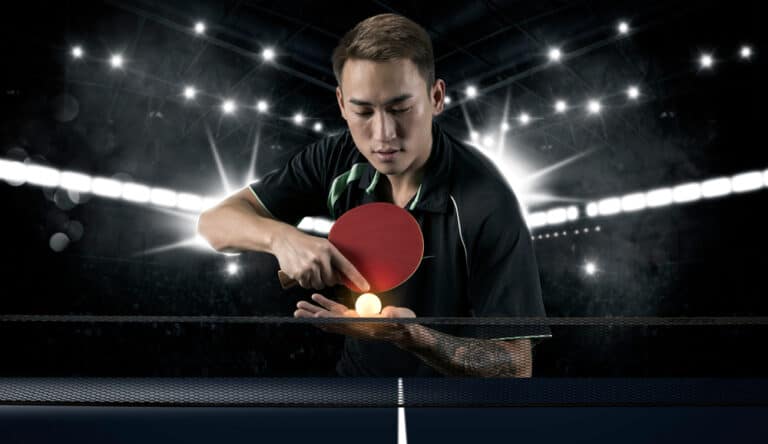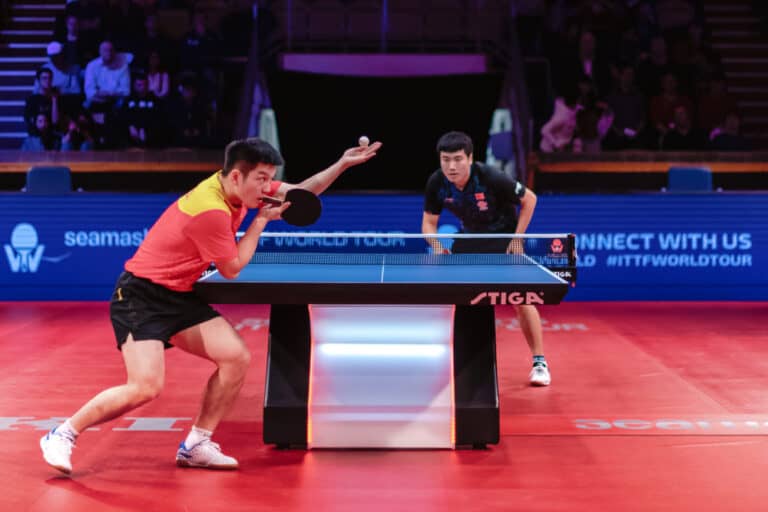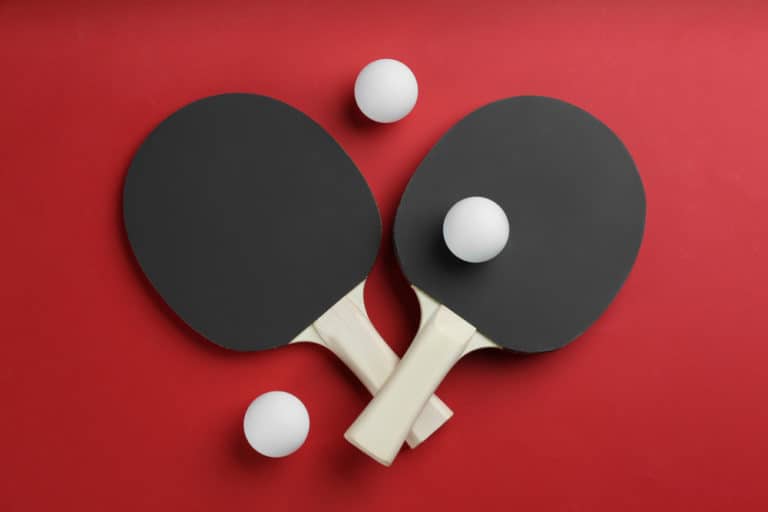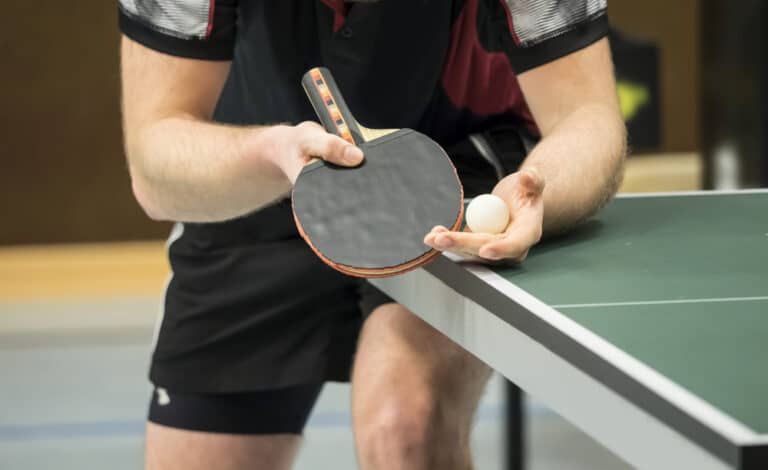How Are Points Scored In Table Tennis Doubles?
Table tennis doubles involves four players crowded around a table, hitting the ball in a way that can leave you confused. If you’ve ever watched a table tennis doubles game, you may have noticed that, besides the extra players, there are some rules that differ from singles matches.
Some unique methods of scoring in table tennis doubles include a player hitting the ball twice in a row or serving to the incorrect square. Teammates must take turns hitting the ball, and serving players must also serve from their right-hand square into their opponents’ right-hand square.
Watching table tennis doubles may make you wonder why players don’t just stand in place and return the ball when it comes to them or serve wherever they like. It can be bewildering if you don’t know which rules have changed or been added. Luckily this guide encompasses everything you need to know about how points are scored in table tennis doubles.
Table Tennis Doubles Scoring Methods
Typically, doubles and singles rules are very similar, with only a few differences. However, it’s essential to take note of these differences as they define how table tennis doubles games are played.
There are four players instead of just two, so some rules have been added to accommodate more players and maintain the structure of doubles games. The additional rules also mean that there are more ways to score points in table tennis doubles than in singles.
A Player May Not Hit The Ball More than Once
In table tennis doubles, the rules state that players on a team must alternate hitting the ball starting from the serve. This means that when a player serves, their teammate must hit the ball returned by their opponent. If a teammate hits the ball twice in a row, the opposing team scores the point. Hence, teammates often rotate positions when playing doubles to avoid doing so.
A common tactic in doubles games is to take advantage of this rule and aim shots at the player who has just hit the ball. This forces them to move out of position and makes it difficult for their teammate to reach the ball. The player who must hit the ball has to avoid running into their teammate and must move further across the table to reach the ball.
Players Must Serve From Their Right To The Opponents’ Right
In table tennis singles, players may aim their serve anywhere on the opponent’s side of the table. However, in doubles, players must serve from their right block to the opponents’ right block. The receiving team wins the point if the serve bounces in either side’s left block.
Since most players are right-handed, this is usually advantageous to the receiving team for several reasons. Firstly, the ball must bounce in the right block, meaning the receiving player can better predict where the ball will land. Secondly, because players must alternate hits, the receiver can aim the ball back at the server, making it difficult for their teammate to reach the ball.
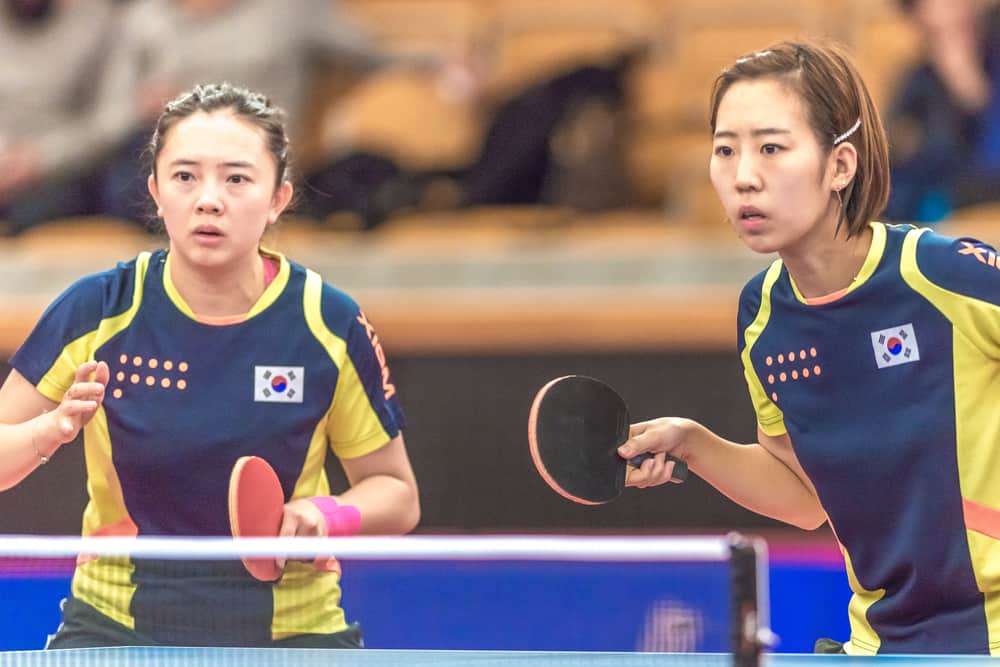
Other Ways Of Scoring Points In Table Tennis Doubles
Aside from the scoring methods unique to table tennis doubles, various ways of scoring points apply to both singles and doubles. While table tennis doubles may have slightly different rules regarding serving and which players can hit the ball, there are still many similarities between singles and doubles.
Failing To Hit The Ball After One Bounce
In table tennis, players must hit the ball back to their opponent’s side of the table after it has bounced once. There are a few ways in which points are scored with regard to this rule. The first way a point is scored is if a player does not wait for the ball to bounce before hitting it back to the opponent. This is called a volley in other racket sports and is not allowed in table tennis.
According to this rule, the second way a point is scored is when the ball bounces more than once. If the receiving player fails to hit the ball before the second bounce, the opponent scores a point. Drop shots are an excellent way of winning points using this rule.
Failing To Return The Ball
The rules state that players must hit the ball with their paddle so that it bounces only on their opponents’ side of the table. The ball could miss the receiver’s side of the table, the receiving player could miss the ball after it bounces, or the ball could bounce on the hitter’s side. If any of these situations occur, a point is scored.
You can force your opponent to miss the ball by hitting it out of their reach or with enough speed. On the other hand, adding spin to the ball is an excellent way of making your opponent’s return bounce on their side of the table or miss the table entirely.
Touching The Table During The Rally
While playing, players may not touch the table with their non-playing hands. Any other part of a player’s body may touch the table as long as the table does not move. This means that leaning on the table to reach for the ball is legal, but supporting yourself with your non-playing hand while leaning is not legal.
Touching The Ball With The Body
Players may not hit or touch the ball with anything besides the racket and the playing hand. The playing hand is allowed as the ball may touch a player’s hand as they attempt to hit it. Still, no other body parts, including clothing, accessories, or other objects, are allowed to touch the ball while in play.
Aiming your shots toward your opponent’s body is a handy tactic because it forces them to move quickly or make an awkward return from directly in front of them. If the ball touches any part of the player’s body, it counts as an obstruction, and you receive a point.
Conclusion
Table tennis doubles and singles only have a few rules that differ, but these differences change the entire format of the game. In table tennis doubles, the unique rules are that players must serve from their right-hand block to their opponents’ right-hand block and must alternate hitting the ball with their teammate. Violating these rules will result in the other team scoring a point.
References
- https://www.myactivesg.com/sports/table-tennis/training-method/table-tennis-for-beginners/how-is-a-doubles-game-played-in-table-tennis
- https://barryustorage.blob.core.windows.net/assets/docs/hpls/table%20tennis%20rules.pdf
- https://www.youtube.com/watch?v=ZWgX_k4Z1NQ&ab_channel=PingSkills
- https://olympics.com/en/featured-news/table-tennis-rules-regulations-how-to-play-official-laws-serve

